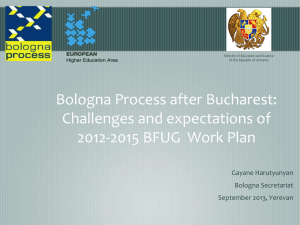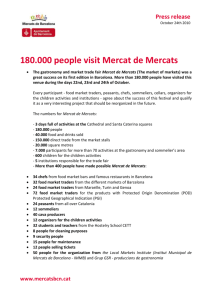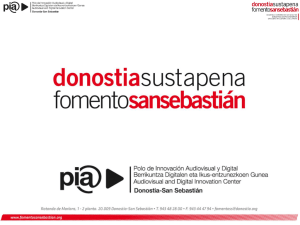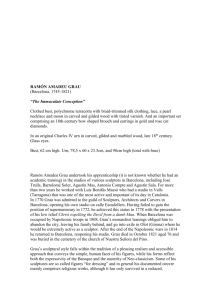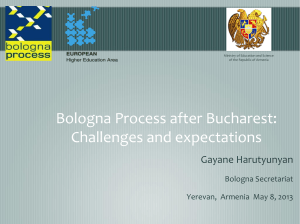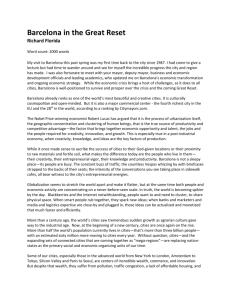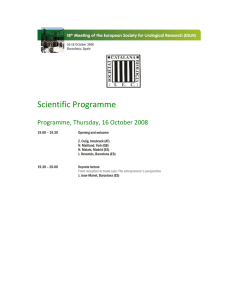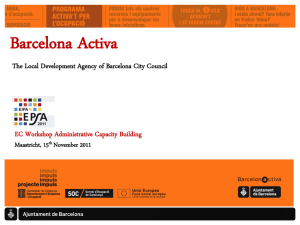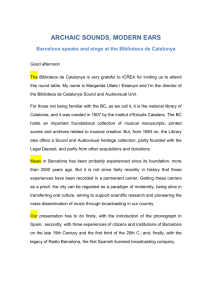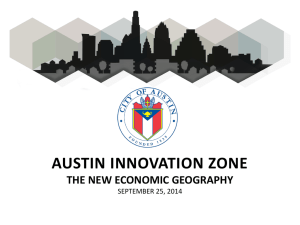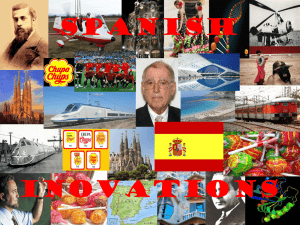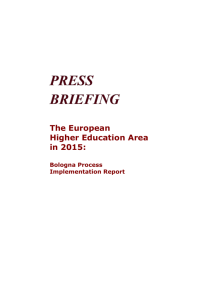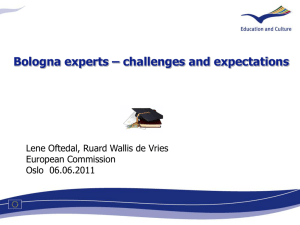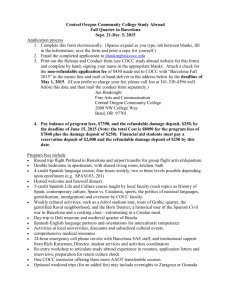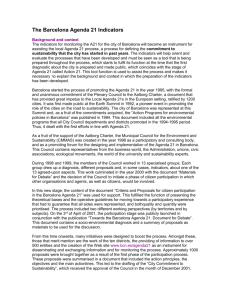European common house of higher education
advertisement
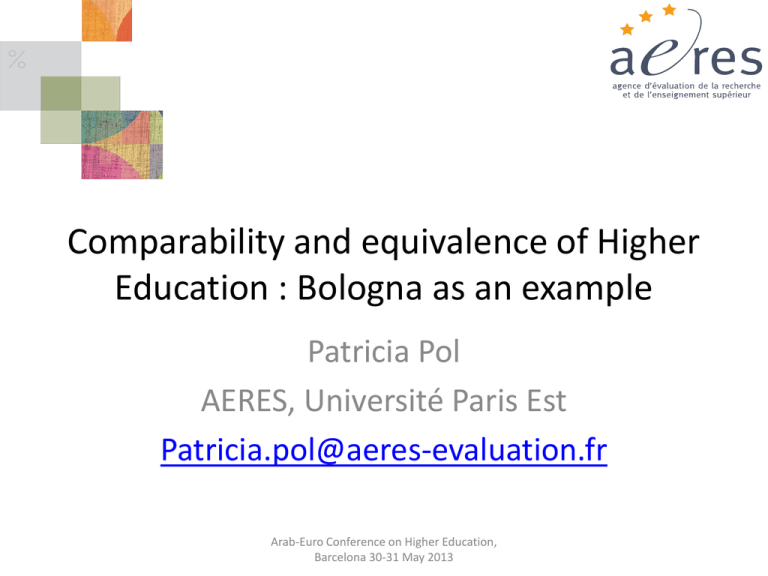
Comparability and equivalence of Higher Education : Bologna as an example Patricia Pol AERES, Université Paris Est Patricia.pol@aeres-evaluation.fr Arab-Euro Conference on Higher Education, Barcelona 30-31 May 2013 Outlines • The European Higher Education Area (EHEA) : a reality and not a chimera • But a diverse reality • At the crossroads : consolidation or new deal ? Arab-Euro Conference on Higher Education, Barcelona 30-31 May 2013 1. A reality and not a chimera • Initiated by a regional starting point and a political willingness of the Ministers of HE From La Sorbonne (4) to Bologna (19) and BudapestVienna (47) • Implemented by a participative organisation BFUG, E4 (EUA-ESU-ENQA-EURASHE) and others… • Benchmarked all over the world Arab-Euro Conference on Higher Education, Barcelona 30-31 May 2013 From 4 to 47 national HE systems put together Arab-Euro Conference on Higher Education, Barcelona 30-31 May 2013 To build a “European common house of higher education” (P. Zgaga, 2012) (11) Partnership (8) the social dimension “THE SECOND FLOOR” (7) higher education structures (the EHEA technical condition sine qua non): the comparability and compatibility of systems, quality assurance, recognition of qualifications etc. (9) the European dimension “THE FIRST FLOOR” (4) higher education as a public good; public responsibility for HE (5) the responsibility of HE; accountability; responsiveness to society (6) the full range of purposes of HE “THE BASEMENT” (1) democracy and democratic values (2) academic values (university autonomy and academic freedom) (3) international co-operation (mobility) (10) the global dimension 2. But a diverse reality - Based on national differences •Because of structural features (nb of students, type of system and profile of institutions, participation rate, public expenditure, historical international attractivity..) •Reforms more focused on national considerations of governance or research than EHEA principles - Leading to unbalanced and incomplete results •Different cycles (180-240 ECTS / 60-90-120 ECTS) •Student workload, mobility, employability (bachelor) Arab-Euro Conference on Higher Education, Barcelona 30-31 May 2013 The implementation of the two-cycle structure Arab-Euro Conference on Higher Education, Barcelona 30-31 May 2013 Joint programmes Arab-Euro Conference on Higher Education, Barcelona 30-31 May 2013 Consolidation (BFUG) or time for a new deal ? (ESU) Global competition Cooperation for more transparency/ 2018 and « better » diversity 2015 Erevan 2012 National strategies of HE &R Bucharest 2010 Vienna Budapest Shanghaï ranking ! 1998-99 La Sorbonne Bologna The EU 2020 Strategy National excellence initiatives 2000 Lisbon strategy 2020 ERA+EHEA Most competitive knowledge economy by 2010 Arab-Euro Conference on Higher Education, Barcelona 30-31 May 2013 Smart Sustainable Inclusive growth 40% graduated Acronyms • • • • • • • EHEA: European Higher Education Area HE&R : Higher Education and Research BFUG : Bologna Follow Up Group ESU : European Student Union EUA: European University Association ENQA: European Network for Quality Assurance EURASHE: European Assocation for Short Cycle Education Arab-Euro Conference on Higher Education, Barcelona 30-31 May 2013 References • www.ehea.info • Report on the implementation of the Bologna process (2011) • Bologna with student eyes 2012, ESU. • The Bologna process at the crossroads, A. Curaj, P. Scott, L.Vlasceanu, L. Wilson, Editors, Springer, 2012 Arab-Euro Conference on Higher Education, Barcelona 30-31 May 2013

